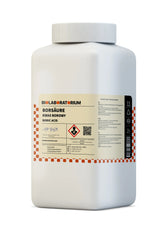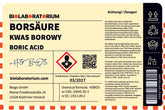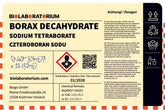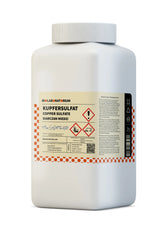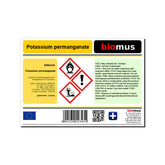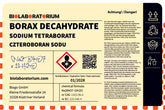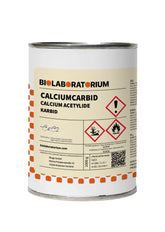Sustainability in chemical product development: trends and perspectives
In a time when environmental protection and sustainability are becoming increasingly important, the chemical industry also faces great challenges. At the same time, the industry offers enormous potential to make a decisive contribution to a greener and more sustainable economy. In this blog post, we highlight the current trends and perspectives in sustainable chemical product development.
From linear to circular value chains
For a long time, the business model of the chemical industry was characterized by a linear approach: raw materials were extracted, products manufactured, and disposed of at the end of their lifecycle. However, this "take-make-waste" principle is reaching its limits in view of resource scarcity and environmental impact. More and more companies are recognizing the need to transition to a circular economic model.
The goal is to design products so that they can be reused, repaired, or recycled at the end of their use. Instead of producing waste, valuable materials should be kept in the cycle and used repeatedly. This concept of a circular economy offers not only ecological but also economic benefits, as valuable resources are preserved and disposal costs are reduced.
Green chemistry as a key technology
Green chemistry plays a key role in sustainable product development. It involves designing chemical processes and products in a way that minimizes environmental impact. This means, on the one hand, using environmentally friendly and renewable raw materials in production whenever possible. On the other hand, the production processes themselves should be energy-efficient and waste-free.
An example of this is bio-based plastics, which are made from renewable raw materials such as corn, sugarcane, or wood. Compared to conventional, petroleum-based plastics, they have a significantly better ecological footprint. More and more manufacturers are also using natural, biodegradable ingredients in cleaning agents and cosmetics.
In addition, chemical companies are working to optimize their production facilities and supply chains to reduce energy and resource consumption as well as emissions. This includes measures such as the use of renewable energy, increasing energy efficiency, or the reuse of process wastewater.
Digitalization as a driver of sustainability
Digitalization offers the chemical industry additional levers to improve its sustainability performance. By using technologies such as artificial intelligence, robotics, or the Internet of Things, production processes can be controlled more precisely, resource consumption optimized, and waste avoided.
An example of this are digital twins, i.e., virtual replicas of real production facilities. Using sensor data and simulations, engineers can identify optimization potentials and continuously improve processes. Digital tools also open up new possibilities in product development itself: for instance, the environmental impacts of new substances and formulations can be tested in advance using computer simulations.
Furthermore, digitalization enables better networking along the entire value chain. Transparency about the origin, composition, and disposal of products creates the prerequisite for efficient material flow management and closed loops.
New business models for more sustainability
In addition to product innovations and process optimizations, sustainability and the circular economy also require new business models. More and more chemical companies are therefore focusing on product-oriented services instead of pure product sales.
Instead of selling cleaning agents or lubricants, they offer their customers surface cleaning or machine lubrication as a service. This provides companies with an incentive to make products more durable and easier to repair. At the same time, they can develop take-back and recycling concepts to keep valuable materials in the cycle.
The concept of chemical leasing models is also gaining importance. In this model, manufacturers retain ownership rights to the products and instead lease them to customers. This allows them to optimize the usage duration and specifically manage return and recycling processes.
Challenges and Outlook
Even though the chemical industry is on a good path, there are still some hurdles on the way to greater sustainability. These include technological challenges, regulatory uncertainties, and the need to inspire customers and consumers for sustainable products.
Nevertheless, it is clear that sustainability is becoming a central competitive factor for the industry. Companies that adapt their product portfolios and business models early to the requirements of green chemistry and a circular economy will have the advantage in the long term. Because the trend towards more environmental protection and resource efficiency will continue to strengthen in the coming years - driven by consumer demands, political regulations, and public pressure.
This presents a great opportunity for the chemical industry to play a key role in shaping a sustainable future. With innovative products, efficient processes, and new business models, it can make a decisive contribution to a greener economy.

